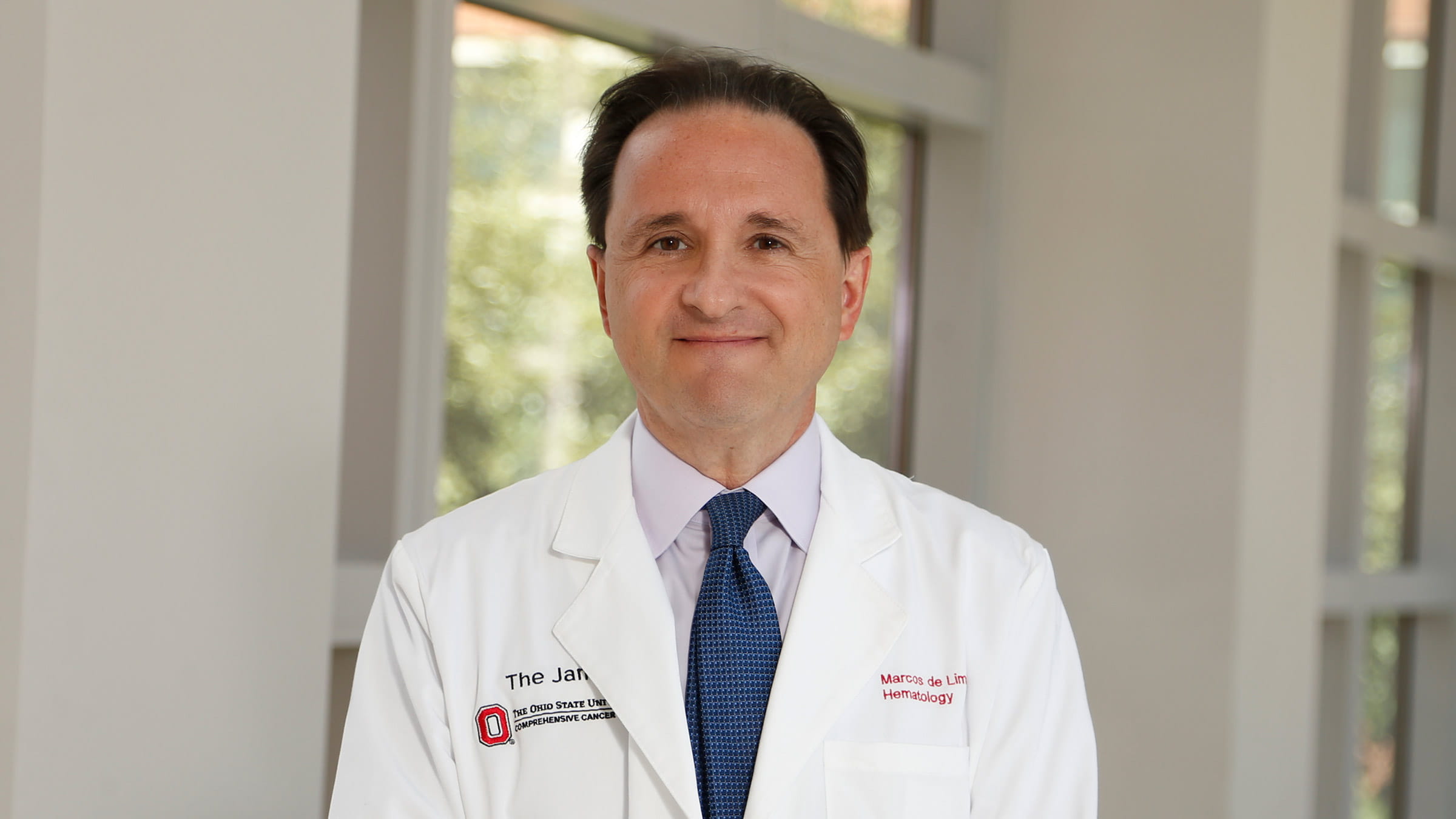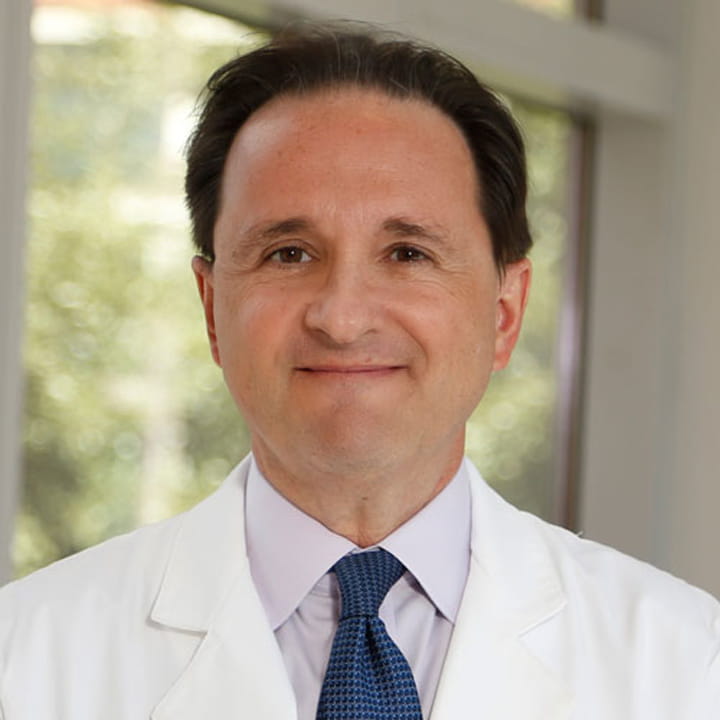
- Question What’s a blood and bone marrow transplant? And what’s a stem cell transplant? Are they the same, or what are the differences?
-
Answer
Bone marrow transplants (BMTs) and peripheral blood stem cell transplants (PBSCTs) are procedures that restore or replace blood-making stem cells that were destroyed by high doses of chemotherapy and/or radiation therapy in patients being treated for certain cancers. Most blood-making cells “reside” in bone marrow — the soft, spongy material found inside bones — but some blood-making cells, called PBSCs, are found in the bloodstream. One can also find blood-making cells in umbilical cord blood. We can remove, or harvest, these cells from any of these locations, so BMTs and PBSCTs are basically the same.
- Question What types of cancer cause a person to need a BMT or PBSCT?
-
Answer
BMTs and PBSCTs are most commonly used for treating patients who have leukemia, lymphoma or multiple myeloma (cancer involving plasma cells, a type of white blood cell), but they also can be used to treat other cancers, such as neuroblastoma (cancer involving immature nerve cells) and several other malignant and nonmalignant conditions.
- Question What are the types of BMTs and PBSCTs?
-
Answer
There are three types of transplants: autologous transplants (patients receive their own stem cells that were removed prior to chemotherapy or radiation therapy); syngeneic transplants (patients receive stem cells from their identical twin); and allogeneic transplants (patients receive stem cells from a sibling, parent or an unrelated donor).
- Question How is a blood and bone marrow transplant performed?
-
Answer
Stem cells are removed from the bone marrow or bloodstream of either the patient or a donor. Placental blood may have been stored for future use. The cells are then infused (returned intravenously) immediately to the patient, or they’re frozen and stored — a technique called cryopreservation — while the patient undergoes treatment with chemotherapy or radiotherapy. After therapies are completed, stored stem cells are thawed and returned to the transplant patient through infusion. These reinfused stem cells grow into and restore the body’s blood-making cells.
The process for removing bone marrow in a BMT is similar in all three types of transplant. The donor receives either general or regional anesthesia, after which we insert needles through the skin over the pelvic (hip) bone or the sternum (breastbone) and into the marrow to extract it from the bone. This takes about an hour. We then process the marrow to remove blood and bone fragments and freeze it to keep the stem cells alive until we need them to be reinfused into the patient. Most autologous (self) transplants use peripheral blood stem cells (PBSCs) rather than bone marrow.
In PBSC transplants, we use a process called apheresis to obtain PBSCs from the bloodstream. PBSCs are “mobilized” into the bloodstream by injections given before apheresis. In this process, we remove blood through a large vein in the arm or through a flexible tube called a central venous catheter that’s placed in a large vein in the neck, chest or groin area. Blood passes through a machine that removes stem cells so they can be frozen and stored until needed. After passing through the machine, the blood (minus stem cells) is returned to the donor. Apheresis can take a few hours to complete.
- Question How serious is a blood and bone marrow transplant?
-
Answer
BMTs and PBSCTs are serious procedures because of their importance in treating patients with life-threatening blood cancers, but the procedures of procuring the cells themselves involve relatively little risk. In bone marrow donation, only a small amount of marrow is removed, so the procedure usually presents no significant problems. The most serious risk associated with donating bone marrow involves the use of anesthesia and some degree of localized pain. Collecting PBSCTs requires no anesthesia.
- Question How painful is a blood and bone marrow transplant?
-
Answer
The area from which bone marrow was removed may feel sore for a few days, and the donor also may feel fatigued. The donor’s body replaces the extracted marrow within a few weeks, but recovery times vary among donors. Some return to their normal routine within a few days while others require a few weeks to fully regain their stamina.
Typically, apheresis causes minimal discomfort. During the procedure, the donor may feel lightheaded and experience chills, numbness around the lips and cramping in the hands. In addition, the medication that donors receive to stimulate the release of stem cells from marrow to bloodstream sometimes causes bone and muscle aches, nausea, fatigue and difficulty sleeping. These side effects usually stop a few days after the last dose of the medication.
- Question Is a blood and bone marrow transplant a major surgery?
-
Answer
Because BMTs and PBSCTs are performed with either needles or apheresis, and with subsequent intravenous reinfusion of stem cells, no surgery is involved. However, bone marrow harvests are performed in an operating room with the use of anesthesia.
- Question How long can someone live after a blood and marrow transplant?
-
Answer
There are patients who received blood and marrow transplants in the late 1960s/early 1970s who are alive and well. Since that period is when transplants were first performed, it’s presumed that patients receiving BMTs or PBSCTs can have a normal life expectancy unless there are complications or the cancer relapses after transplant.
- Question Are there any complications that BMT and PBSCT patients should be aware of post-treatment?
-
Answer
Greater susceptibility to infection and bleeding as a consequence of high-dose cancer treatment is the primary risk of BMTs and PBSCTs. Antibiotics may help prevent or treat infection, platelet transfusions may help prevent bleeding, and transfusions of red blood cells can treat anemia. Short-term side effects of BMTs and PBSCTs may include fatigue, nausea, loss of appetite, hair loss, mouth sores and skin reactions.
Among possible long-term complications stemming from pretransplant chemotherapy and radiation therapy are secondary cancers, cataracts, infertility and damage to organs such as the heart, liver, lungs and kidneys.
Another complication that may arise from patients receiving an allogeneic (from a donor) transplant is graft-vs.-host disease (GVHD), which occurs when white blood cells from the donor (the graft) identify cells in the patient (the host) as foreign and attack them, possibly damaging organs such as the liver, skin and intestines. This disease can develop soon after the transplant (acute GVHD) or long afterward (chronic GVHD). GVHD can be very serious and difficult to treat. Typical treatments include steroids and other immunosuppressive agents.
- Question What is Ohio State’s expertise in blood and bone marrow transplantation?
-
Answer
Since performing its first BMT in 1984, Ohio State’s Blood and Marrow Transplant Program has become the largest adult BMT program in Ohio in terms of patient volume, having completed more than 6,000 transplants. In 1989, we became a member of the National Marrow Donor Program, a membership that we’ve maintained for over three decades, and we have been accredited by the Foundation for the Accreditation of Cellular Therapy since 2003. In 2011, our program became one of 20 BMT Clinical Trials Network (CTN) Core Clinical Centers in the nation. Per BMT CTN metrics, Ohio State consistently ranks among the top five in clinical trial accrual through this network of centers.
Read about Dr. de Lima’s role in the explosion of cellular therapy to treat blood and marrow cancers
- Question What are important factors to consider when choosing a hospital for blood and marrow transplantation?
-
Answer
Factors to consider include the hospital’s longstanding experience, expertise and global acclaim for excellence in performing BMTs and PBSCTs. The Blood and Marrow Transplant Program at the OSUCCC – James is internationally known for our science-based achievements in treating hematologic malignancies (blood cancers). Our multidisciplinary team of prominent subspecialists understand that every patient’s cancer is biologically unique, requiring individually tailored treatments that target the molecular nature of each malignancy. These teams conduct meticulous research that translates to innovative cancer care and leads to faster responses, fewer side effects and better outcomes.

The region’s most experienced blood and marrow transplant program
Trust your care to The James.
Learn more




